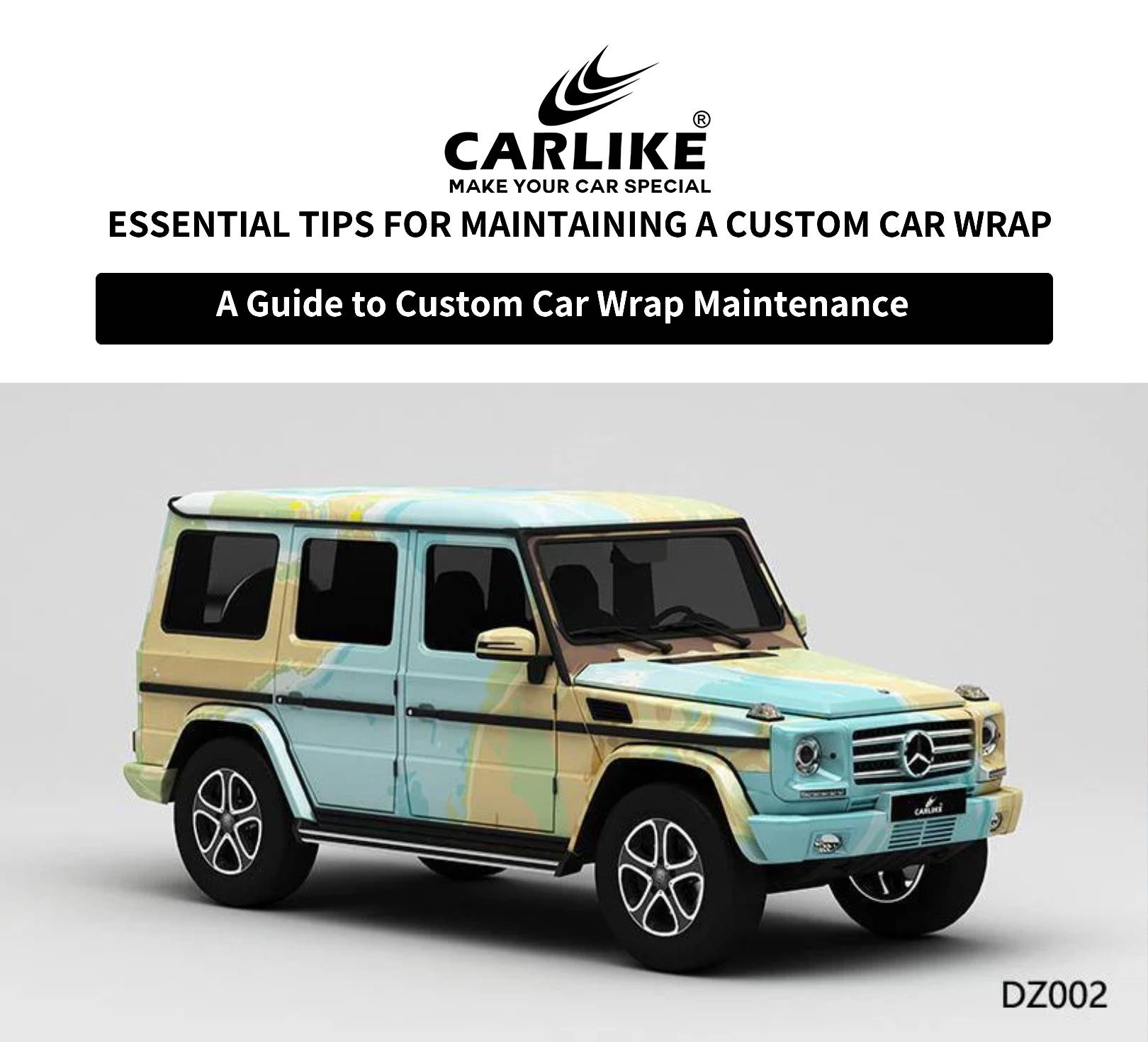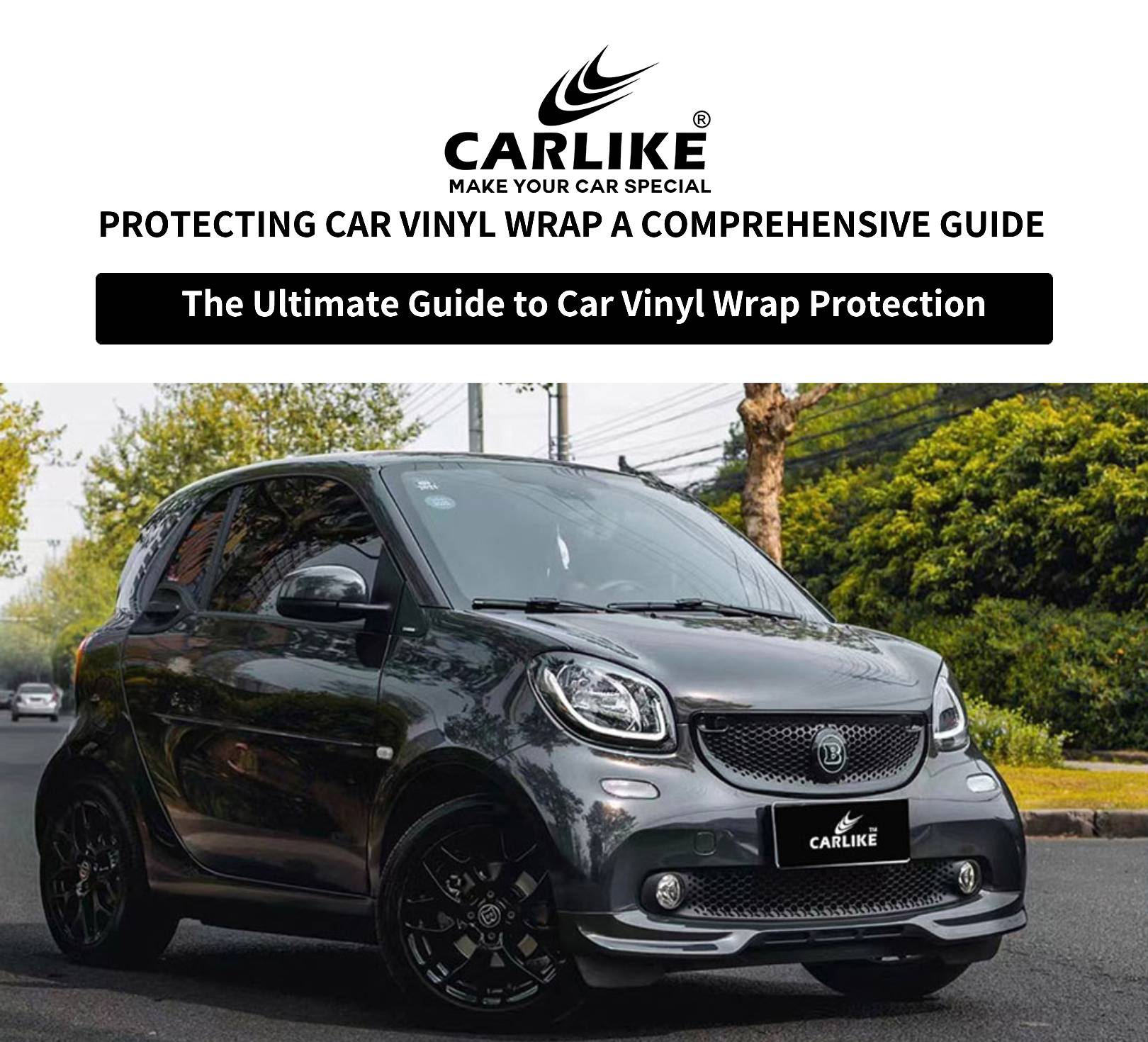Introduction
A car wrap is a vinyl material applied to the exterior of a vehicle to change its appearance temporarily or permanently. It serves both aesthetic and protective purposes, allowing for customization of color, texture, and design without altering the original paint of the vehicle.
Factors Affecting the Longevity of a Car Wrap
1. Material Quality
Impact on Durability: The quality of the vinyl wrap is one of the most significant factors influencing its longevity. High-quality vinyl is made with superior materials and manufacturing processes, resulting in better durability, flexibility, and resistance to environmental factors. Premium films are less likely to fade, crack, or peel over time, even under challenging conditions. They also provide better adhesive properties, ensuring a more secure bond to the vehicle's surface.
Key Points:
- Higher-quality vinyl is thicker and more resistant to wear and tear.
- It offers better UV protection, reducing the risk of fading.
- Superior adhesive reduces the chances of lifting or bubbling.
2. Climate and Environmental Conditions
Effect of Weather and Elements: The environment in which a vehicle is used and stored significantly impacts the lifespan of a car wrap. Exposure to extreme weather conditions, such as intense sunlight, heavy rain, snow, or high humidity, can accelerate the aging process of the vinyl. Prolonged exposure to UV rays can cause the vinyl to fade and lose its vibrant colors, while harsh weather can lead to cracking or peeling.
Key Points:
- Sunlight and UV exposure can cause fading and deterioration of the film.
- Extreme temperatures, both hot and cold, can lead to cracking or bubbling.
- Environmental pollutants, such as acid rain, bird droppings, and road salt, can degrade the vinyl.
3. Installation Quality
Importance of Professional Installation: The quality of the installation plays a crucial role in the longevity of a car film. A professional installation ensures that the vinyl is applied smoothly, without bubbles, wrinkles, or misalignments. Proper preparation of the vehicle's surface, including cleaning and priming, is essential to achieve a strong bond between the vinyl and the car. Poor installation, on the other hand, can lead to early failure of the wrap, such as lifting edges, bubbling, and uneven wear.
Key Points:
- A skilled installer ensures a seamless application, reducing the risk of premature damage.
- Proper surface preparation is critical for strong adhesion and longevity.
- Avoiding DIY installation errors can prevent issues like bubbling, misalignment, and lifting.
4. Maintenance and Care
Prolonging the Life of a Car Wrap: Regular maintenance and proper care are vital for extending the life of a car wrap. Simple practices, such as gentle washing, avoiding harsh chemicals, and protecting the vehicle from prolonged sun exposure, can make a significant difference in how long the wrap lasts. For example, hand washing with mild soap and water is preferred over automatic car washes, which can be abrasive. Additionally, parking in a shaded area or using a car cover can help protect the wrap from environmental damage.
Key Points:
- Regular hand washing with mild detergent preserves the vinyl’s finish.
- Avoiding abrasive tools and chemicals prevents scratches and deterioration.
- Using a car cover or parking in a garage protects the wrap from the elements.
- Promptly removing contaminants like bird droppings or tree sap prevents staining and damage.

Signs That a Car Wrap Needs Replacement
Visual Indicators That a Wrap Is Nearing the End of Its Life
Fading:
- What to Look For: The color of the wrap may become dull or less vibrant, especially in areas exposed to direct sunlight. Fading is often uneven, with more noticeable discoloration on the roof, hood, and trunk.
- Cause: Prolonged exposure to UV rays can break down the pigments in the vinyl, leading to a loss of color intensity.
Peeling:
- What to Look For: Edges of the wrap, such as around door handles, mirrors, and seams, may begin to lift or peel away from the vehicle’s surface. Peeling may start small but can spread over time.
- Cause: Poor installation, environmental stress, or degradation of the adhesive can cause the vinyl to lose its grip on the vehicle’s surface.
Cracking:
- What to Look For: The wrap may develop small cracks, particularly in areas that experience frequent movement or flexing, such as around curves and contours. Cracks may initially be fine lines but can worsen, leading to flaking or breaking apart of the vinyl.
- Cause: Exposure to extreme temperatures, aging of the vinyl, or physical stress can cause the material to become brittle and crack.
Bubbling:
- What to Look For: Bubbles or air pockets may form under the surface of the wrap, creating an uneven appearance. Bubbling often occurs around the edges or in areas where the wrap was not applied smoothly.
- Cause: Trapped air during installation, deterioration of the adhesive, or exposure to heat can cause bubbles to form under the wrap.
Surface Wear:
- What to Look For: The surface of the wrap may show signs of wear, such as scratches, scuffs, or abrasions. These marks can diminish the overall appearance of the wrap and expose the underlying paint.
- Cause: Physical contact with objects, automatic car washes, or abrasive cleaning tools can cause surface wear over time.

How to Determine When It's Time to Replace or Repair a Wrap
-
Assess the Severity of Damage:
- If the wrap shows minor signs of wear, such as small areas of fading or light surface scratches, it may be possible to repair the affected sections rather than replacing the entire wrap. However, if the damage is widespread, such as extensive fading, cracking, or peeling across large areas, replacement may be the better option.
-
Consider the Age of the Wrap:
- Car wraps typically last between 3 to 7 years, depending on the quality of the material, installation, and environmental conditions. If your wrap is nearing or has exceeded this lifespan, and you notice multiple signs of deterioration, it may be time to consider a full replacement.
-
Evaluate the Overall Appearance:
- If the wrap’s appearance has significantly declined and no longer meets your expectations for aesthetics or branding, it may be worth replacing. A worn or damaged wrap can detract from the vehicle’s overall look and may give a negative impression, especially for business vehicles.
-
Check for Adhesion Issues:
- If you notice peeling or lifting edges, it’s essential to address these issues promptly. Small areas can sometimes be repaired, but if large sections are peeling or if the adhesive has failed, replacing the wrap may be necessary to prevent further damage.
-
Consider the Cost of Repair vs. Replacement:
- Weigh the costs of repairing versus replacing the wrap. If repairs are minor and cost-effective, they may extend the life of the wrap. However, if the repairs are extensive and costly, a full replacement might offer better value in the long run.




